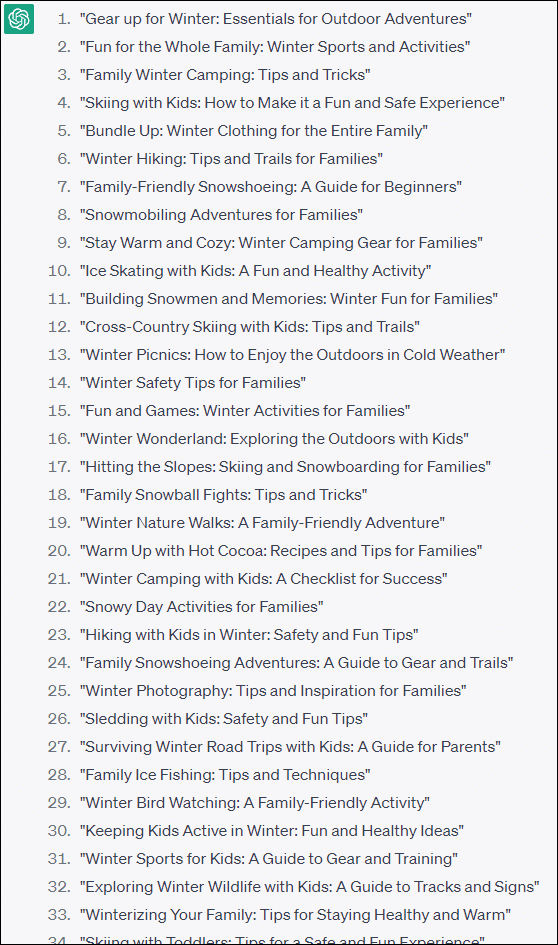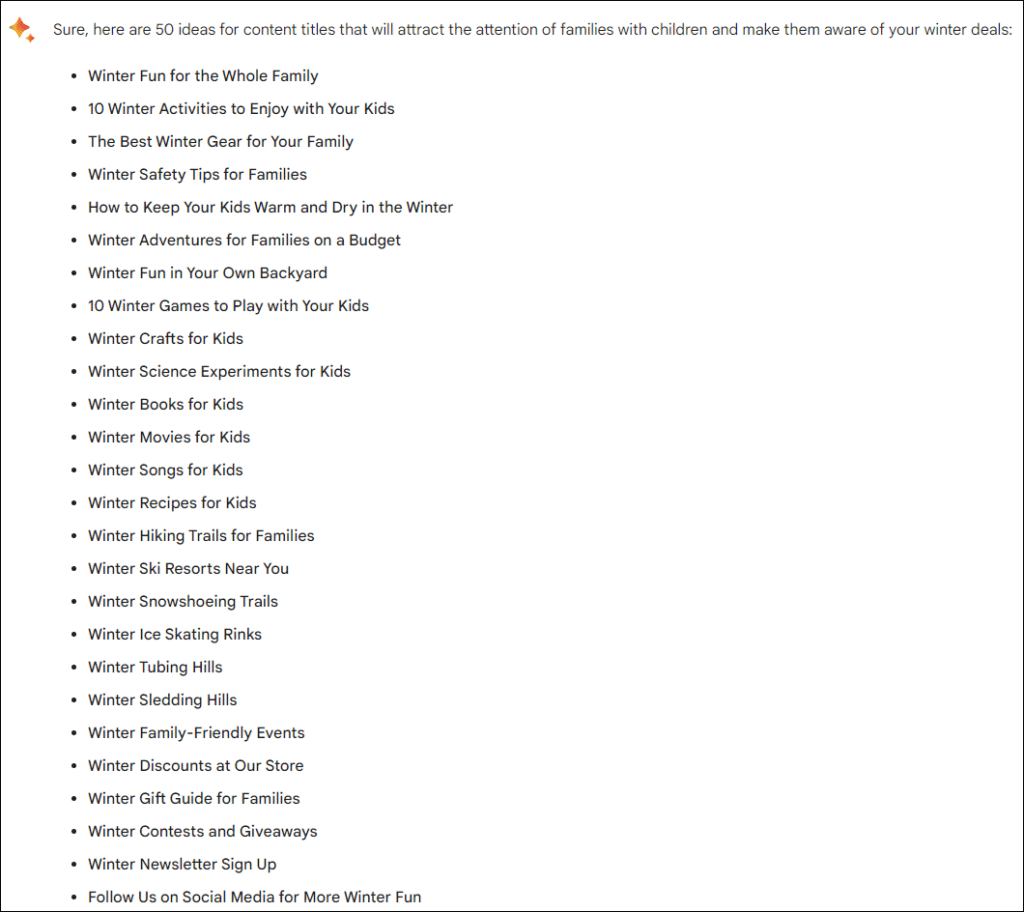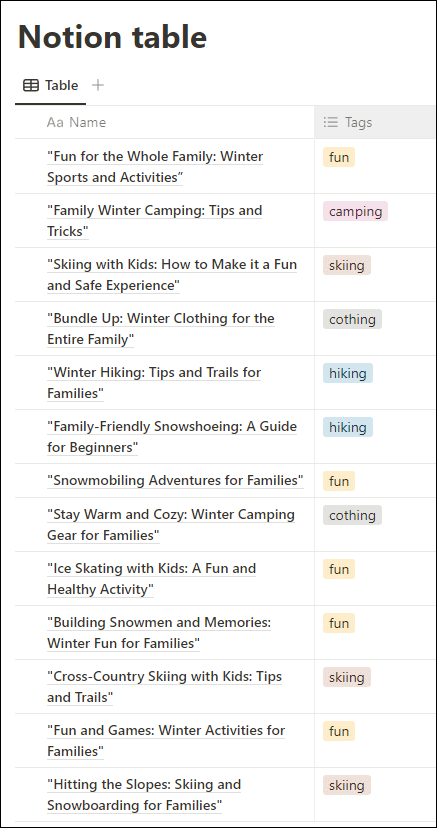Creating good content is like having a shooting star in a sky full of twinkling lights.
It’s what sets you apart, draws people in, and keeps them coming back for more.
It’s good for your website visitors, good for Google’s spiders, and basically just good for business.
You already know this, but for many people, the hardest part in the process isn’t the writing.
The hardest part is coming up with the ideas.
What on earth to write about.
Until now.
I’m going to show you the exact framework that I use to come up with ideas – the questions I ask, the decision-making process and even the systems that I use. All of which are without spending a penny or cent, by the way.
The framework consists of four questions, and six steps.
I’ll show you the tools that I use for the process, but you don’t necessarily need to use anything more than a piece of paper.
That said, who doesn’t love a colour-coded table on their screen?
Let’s begin with the questions.
QUESTION 1 – what’s the purpose of the article?
While this may at first appear to be obvious, it’s incredibly easy to overlook. But the purpose of the article is the base upon which everything else is built.
Possible ideas may include:
– demonstrating expertise
– general publicity
– keeping Google happy and fed
– introduction of a new product or service
– educational
– intellectual exploration
– sales lead and more
Why do you need to decide this?
Because there’s no such thing as a generic piece of content – one size definitely doesn’t fit all. And if you want your content to work effectively, this is a vital step.
QUESTION 2 – who’s going to read it?
Again, this is easy to overlook. But the type, tone and theme of the content will vary according to who you’re hoping to engage with.
For example:
– business owners
– heads of marketing
– young parent with time constraints
– techies with a problem
– people aspiring to improve health and fitness and so on
Why do you need to decide this?
Because again, there’s no such thing as a generic piece of content. Different people are looking for different things, even though the basic ideas or themes may be the same. And each group will be better suited to certain reference points and even tone of voice.
QUESTION 3 – what would you like their reaction to be?
Do you hope to engage their attention by expressing a controversial idea? Or perhaps by addressing a pain point through empathy?
And what will the ideal outcome be, after they read the content?
That they save it in their browser bookmarks, soon to be forgotten? That they schedule a meeting to discuss with their team? That they research more about what you’ve shared? That they explore your website to see if you might be a good fit? That they reach out to you?
That they click or act on your call to action?
Why do you need to decide this?
Because making your goal as easy as obvious and possible for them to achieve is the only way to make it happen.
QUESTION 4 – what will the theme be?
This isn’t about coming up with the specific idea for the content, but the area it may be connected to.
If, for example, you sell outdoor clothing and equipment, the theme could be outdoor footwear, camping equipment, choosing a tent, survival and emergency equipment, navigation devices and so on.
You don’t want to get too specific here, but you do want to hone in a little.
STEP 1 – the brainstorm
If you have a team to bounce ideas around, then begin with a good old-fashioned “no idea is too stupid or impractical” approach. Just throw them out there, and write up every single one of them. Without any sort of judgement.
Because I work from home, I usually do this stage on my own. And as talking to myself doesn’t produce healthy results, I tend to use ChatGPT, Bard or whatever AI platform is the current flavour of the month.
For example, I might ask:
“I own a store that sells outdoor equipment and clothing. I need to create some content that will attract the attention of families with children. I’d like them to become aware of the deals that we have in the winter. Give me 50 ideas for content titles.”
The idea here isn’t for AI to give me the content title. It’s to generate the spark that leads to the idea. And it works. There are already some good ideas in the list that I can work with and expand.
STEP 2 – trim down or cull the list
I asked ChatGPT for 50 ideas, but many of them won’t be a good fit. For example, number 18’s “Family snowball fights: tips and tricks” isn’t going to do me any good at all.
The tool you use for this process is down to you, but I tend to paste the whole list into a table in Notion. From there, I quickly delete the ideas that don’t work for me, or for what I’m intending to do. This goes back to defining the purpose of the content in the first place.
Be ruthless here. If you aren’t sure about the idea, how interesting it might be or even what you could write about it, get rid of it.
This is all about culling a list of 50 so-so ideas into a shorter list of serious and viable contenders.
STEP 3 – label themes
This isn’t necessarily a vital part of coming out with the new idea right now, but it can certainly be a big help for the future.
I keep on using Notion for this purpose, but any text editor, Word-type application or even sheet of paper will be fine too.
All I do is simply label each idea or title with one theme. This works best when you stick with one per idea.
The idea is to group the content into groups or themes, and it’s a good idea to keep it as simple as possible.
For the example of the outdoor store, I’ve tagged each idea with skiing, camping, hiking, clothing and so on.
STEP 4 – explore in search
Go to the search engine of your choice (!) and run through both the themes and titles, to see what comes up.
Chances are that by this point you’ll find a small number that jump out at you. If so then add them to the table of ideas.
STEP 5 – decision time, but…
By now, you should have a list of good ideas for content. But you’re going to have to choose one of them for the optional final step. Don’t worry though. The other ideas won’t be killed as such, you’ll just leave them for another time.
If what you’ve chosen is good enough as it stands, then congratulations. You have your idea, and a list of future ideas – now go and create the content.
If you’re not completely certain about what approach to take, there’s one final step you can take.
STEP 6 (optional) – expand what you compressed
For the sake of an example, let’s assume that the article will be something to do with Family Winter Camping. But you’re still not sure about where to go with this.
Take your phrase, and drop it into AnswerThePublic. Change each view to “data”, and see what jumps out of you.
And in the interest of being kind to yourself, add any other viable ideas to your list for future you. You’ll thank yourself. Kind of.
Coming up with fresh content ideas just got easier
The first time you do this, you might find it slow and even a little frustrating. But it’s worth persevering. Used correctly, it soon becomes a quick and easy way to create good content for your business.
Go forth and create great content!
Unique ideas for your business
The Demystifier puts practical ideas into your hands. You won't find them elsewhere. Original, actionable and insanely effective.






